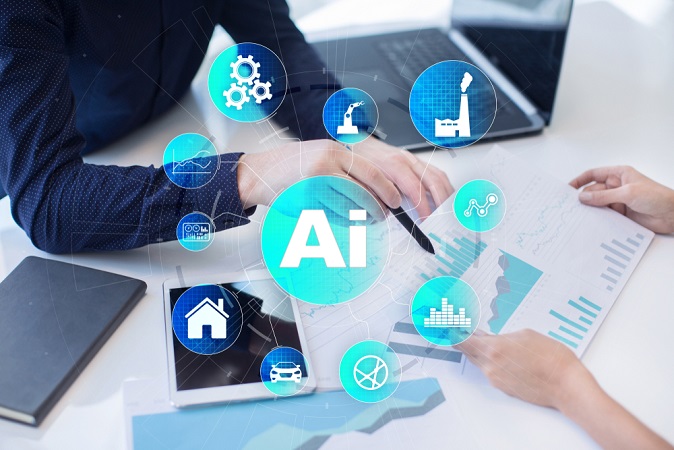Artificial Intelligence (AI) has made strides in the business world in recent years, as more companies are adopting new technologies to optimize their operating processes, streamline customer service and be able to create personalized advertising.
In addition, this trend will follow the same path in the coming years: by 2023, spending on AI systems will reach $ 97.9 billion, more than two and a half times the 37.5 million that were planned for 2019. What It represents an annual growth rate of 28.4%, according to the Worldwide Artificial Intelligence Systems Spending Guide report, carried out by the consulting firm IDC.
Clearly the data indicates AI growth is anticipated and a benefit to organizations around the world, so they should start reviewing ways on how it can positively impact your business. According to a survey conducted by the CEOs association, Vistage, 29.5% of business leaders affirm that of all the available technologies, AI is the one that will have the greatest impact on their firms, regardless of the sector in which they are developed.
"Artificial Intelligence is not just for large companies that have billions of dollars of available capital," says Gustavo Parés, CEO of the firm specialized in Artificial Intelligence and Cognitive Computing, NDS Cognitive Labs. "Small and medium-sized Companies can also take advantage of this technology to help their employees and obtain a great competitive advantage, "he explains.
In Mexico, companies such as Banorte, Banco Azteca or Aeroméxico have successfully implemented Artificial Intelligence, which significantly increased their number of clients and reached up to 90% approval by their users. For this reason, and in order to encourage Mexican companies to join the wave of digital transformation, NDS Cognitive Labs shares 4 ways to successfully implement AI:
Start progressively
By starting small, companies will be able to learn to use Artificial Intelligence, collect feedback on its performance, and expand as needed. The tool will be of greater value to the company if the technology focuses on a specific area or set of data. For example, a report by consulting firm McKinsey & Company indicated that the majority of executives whose companies have adopted AI have registered an increase in income in the business areas in which it has been applied, while 44% state that AI has helped cut costs for your company.
In addition, the use of AI will facilitate the communication of collaborators by using digital communication tools such as Slack or WhatsApp, which makes solving problems a more agile process. Amazon Artificial Intelligence, for example, is able to measure the productivity of its employees through an automated system. This can also be accomplished through applications developed specifically to measure and improve productivity, such as Asana. It is important to understand that AI must be integrated as part of existing business processes, so there is no need to make drastic cultural changes or new processes within the organization.
Identify areas of implementation
For the implementation of Artificial Intelligence to be successful, companies need to identify the areas in which these tools are needed. A detailed description of the role that AI will play and its functions will greatly benefit the business, so it is necessary analyze which will be the areas where these tools will be implemented and what is expected of them. Not only information technology, but also in logistics, in the supply chain and in any business function in which it can be implemented.
Train collaborators
The perfect time to integrate AI is when the company is ready for a technological restructuring, that is, if business processes have already moved from the world of paper to the cloud. Even so, it is vital to start little by little in order to discuss the objectives of the projects and be honest about what the team does not yet understand about these new tools.
Once knowledge gaps have been discovered, collaborators should be trained so that they can make optimal use of the applications and be able to fully exploit their benefits, since digitization is useless if workers do not know how to use it. these new tools. To achieve this smoothly, a time frame of a few months can be established to achieve the training objectives. Once the pilot project is completed, it is necessary to analyze how long it will take to complete the total innovation project and how long it will be implemented in the business.
Incorporate Artificial Intelligence in daily tasks
AI has to be trained to function optimally, and thanks to machine learning, it will learn to perform different tasks and automate them, generating data that will be available to workers. Thus, with the additional information provided by AI automation, employees will have a powerful tool to carry out their long and repetitive tasks, so they will be able to focus on the most complex and specialized tasks such as decision making and personalized attention to their clients. Due to the fear that technology will replace the human being in the workplace, it is important to present these tools as a solution that will help employees to develop professionally and with which they can work hand in hand, not as something that will replace them. This will help them have an experience where they can see how AI increases the importance of their role in the company.


